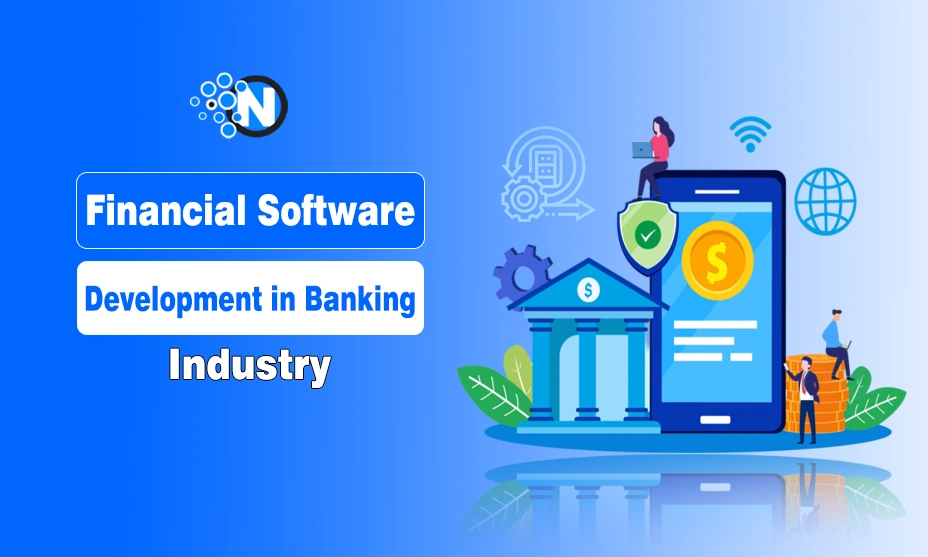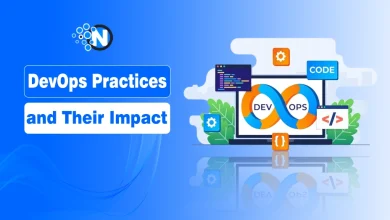How Financial Software Development Is Changing the Banking Industry

The days are long gone when developing software for a bank required starting from scratch with each line of code. Banks can rapidly develop solid systems by using pre-built modules, application programming interfaces (APIs), and platforms.
In this blog post, I will explain how financial software development is changing the banking sector and the tools that modern developers use to transform the finance industry without having to start from scratch.
Let’s start!
8 Ways Financial Software Development Is Changing the Banking Industry
Here are the 8 ways how financial software development is changing the banking industry.
1. Core Banking Systems: The Ready-Made Backbone
The construction of a core financial system used to take several years. Mambu and Temenos Transact are two examples of platforms that now offer cloud-native solutions that can handle everything from account management to loan processing without any further configuration.

For example, Mambu’s API-first architecture lets banks plug in third-party services like fraud detection or investment portfolio management tools without overhauling legacy systems. Starling Bank used this approach to launch in 14 months, a fraction of the time traditional builds demand.
2. Payment Engines: Plug-and-Play Transactions
In the world of banking, the processing of payments is the bloodstream. APIs such as:
- Stripe, which is used by Revolut for card payments, are utilized by fintech companies rather than the construction of proprietary gateways
- Provided for the purpose of integrating bank accounts (integrated into Venmo)
- GPI, which is used by SWIFT for real-time tracking across borders
One example is the Brazilian financial institution Nubank, which processes 1.2 billion transactions every month by combining the infrastructure of Stripe with the payment APIs offered by Pix. What is the key? Instead of debugging custom code for regional compliance, using pre-tested modules is becoming increasingly popular.
3. Security and Compliance: Off-the-Shelf Armor
Innovations are stifled by regulatory obstacles. Solutions that are already prepared To rewrite the script:
- “Jumio for AI-powered Know Your Customer” (identification verification in thirty seconds)
- The anti-money laundering software Feedzai (which monitors 10 million transactions each hour)
- A score of ninety percent or above for the fraud risk score
To ensure that Monzo was in compliance with the Open Banking regulations in the United Kingdom, the company integrated financial services software components from Token.io to ensure the safety of data sharing. The end result? The audits were passed in a matter of weeks, not months.
4. Blockchain: No Need to Mine Your Own Business
When it comes to banking, blockchain is not really about creating cryptocurrencies. This is about making use of frameworks that already exist:
- Corda Blockchain is a private blockchain that operates for the purpose of interbank settlements. HSBC uses it for currency netting
- RippleNet provide liquidity solutions for international payments, which are the driving force behind Santander’s One Pay FX
- We.trade and other trade finance platforms are examples of Hyperledger Fabric
Through the use of we.trade’s pre-built smart contracts, BNP Paribas could conduct trade financing deals worth €20 billion without the need for any custom blockchain development.
5. AI/ML Models: Banking’s New Brainpower
You can fine-tune pre-built AI models, so why bother training them from scratch when you can?
- For UBS, personetics is a method that predicts the spending patterns of customers
- Using artificial intelligence that is capable of self-learning, Darktrace is able to identify cyber threats
- Conversative chatbots for financial institutions, such as DBS are powered by Kasisto
Thanks to Goldman Sachs’ integration of AWS’s SageMaker, the time needed to generate machine learning models for credit risk assessment was reduced by sixty percent. What’s the key? They began by utilizing the pre-trained fraud detection algorithms provided by AWS before proceeding to customize them.
6. Investment Tools: Democratizing Portfolio Management
It is no longer a niche market for robo-advisors. Platforms such as Addepar are responsible for the collection of portfolio data, whilst BlackRock’s Aladdin assists institutions with risk analytics. APIs are utilized by even the most insignificant players:
- Plaid Investments: Pulls real-time portfolio data from brokerages
- SigFig: Automated rebalancing algorithms
Using investment portfolio management software from Addepar and syncing it with their customer relationship management system (CRM) through an application programming interface (API), a Swiss private bank was able to reduce the amount of time it took to onboard new customers by 70%.
7. Regulatory Reporting: Automating the Paperwork
Compliance with regulations like as GDPR, MiFID II, and Basel III requires a full-time job. It is the pre-built solutions that take care of the big jobs:
- Automates regulatory reporting for more than 5,000 institutions, according to AxiomSL
- Real-time monitoring of sanctions and PEP lists is featured by ComplyAdvantage
- One click is all it takes to generate BCBS 239 reports with Suade
By utilizing AxiomSL’s templates, Deutsche Bank was able to reduce the number of reporting errors by 45%, so avoiding potential fines of millions of dollars.
8. The Hybrid Future: Mixing Pre-Built with Custom
Despite the availability of all these tools, banks still want individualized solutions. What is the secret? Applying architectures that are modular. An example of this would be a neobank to:
- For safe and secure messaging between banks, use Corda.
- Utilize Stripe as a payment processor.
- Build a bespoke user interface to differentiate your brand.
This is exactly what Chime achieved, overlaying a one-of-a-kind user experience on top of third-party banking APIs, which are currently valued at $25 billion.
Final Words
Developing banking software is no longer about having a strong coding command. It’s all about building Legos strategically, which means selecting the appropriate pre-built blocks (APIs, platforms, modules), and then welding them together with targeted custom code.
Companies that grasp this balance, such as those responsible for advancements in financial services software, are not simply staying up. In the world of money, they are redefining what is possible.
It is not a matter of whether or not your bank requires custom software. The question is whether you will waste time trying to start from scratch or begin to build on the shoulders of giants.




